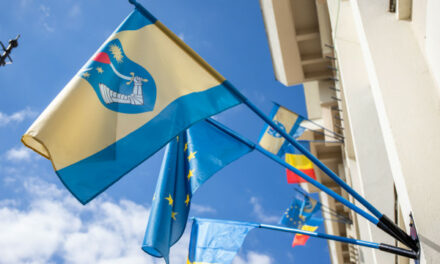The representatives of the villages belonging to the Felszeg landscape unit in Kalotaszeg presented their colorful national costumes, traditions and customs on Thursday afternoon, on the Farkas Street stage. Organized as part of the Hungarian Days in Cluj-Napoca, the Focus on Kalotaszeg: Felszeg program item returns on Friday and Saturday with the presentation of new settlements in Kalotaszeg.
Bánffyhunyad, Magyargyerőmonostor, Nyárszó and Sárvásár, Magyarvalkó, as well as Jákótelke and Kalotaszentkirály presented themselves on Thursday afternoon at the Fókusban Kalotaszeg costume show, folk dance and folk music performance. Despite the heat, the space in front of the small stage was filled with curious eyes waiting to admire the far-famed traditional costumes of Kalotaszeg. The audience also broke into song when those on stage performed folk songs in addition to their costumes and presentations of their villages.
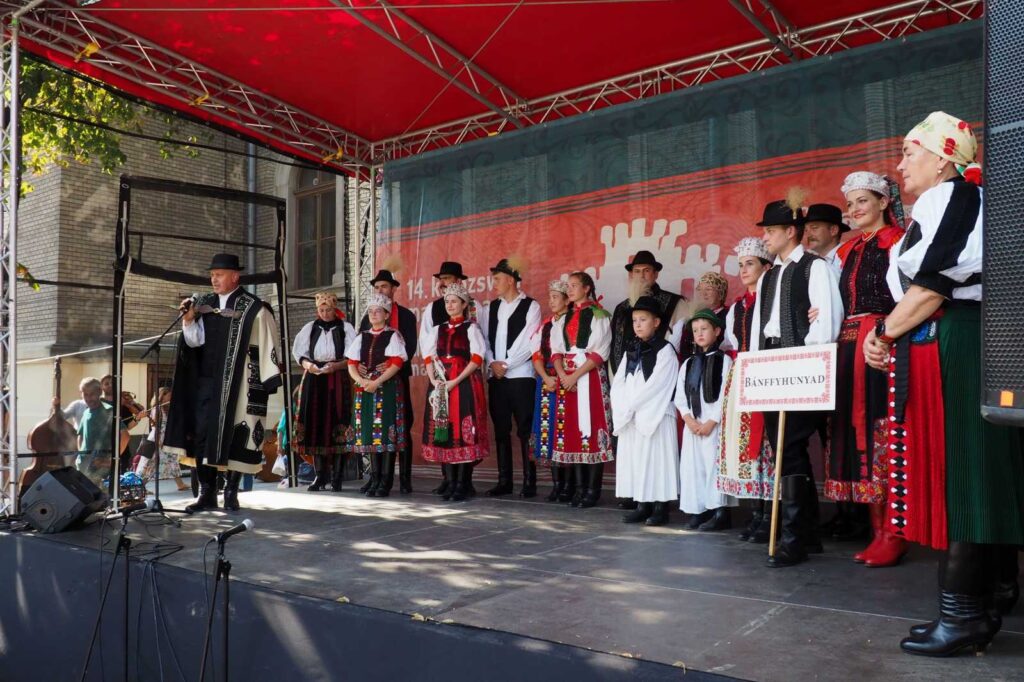
Photo: Balázs Borsi / Maszol
The costume of Kalotaszeg is rich in colors and decorated in detail, which is precisely why it is one of the most well-known traditional costumes of Hungarians. Although they have a structural unit and the colors are similar, different fashions and trends prevailed in each community. It is interesting that the people of Kalotaszeg can identify someone's local affiliation based only on their clothing - we learned from Dr. From Tekla Tötszegi, who conferred the introduction of the village communities.
The people of Bánffyhunya were the first to take the stage, the town was not only the fair center of Kalotaszeg, but also a point in the region to which the people of Kalotaszeg adapted their clothing. This is a community in which the signs of urbanization soon appeared, as only new clothes were made for confirmation in the 1930s. At the same time, the pieces from their predecessors were preserved with great love and respect and are worn according to its order and manner. The folk costume of the Bánffyhunya people is characterized by their preference for simpler, minimal decorations and darker colors.
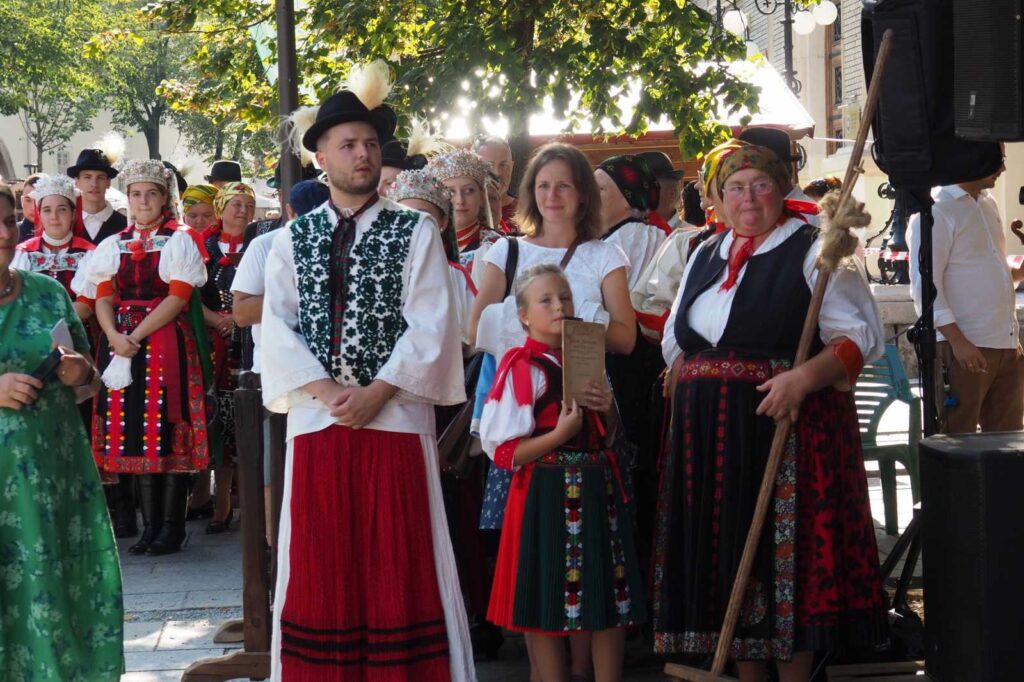
Photo: Balázs Borsi / Maszol
Next came the Magyargyerő monostori, whose folk costume was presented by Katalin Sinkó Kalló, the author of the volume Kalotaszegi calligraphy. Magyargyerőmonostor is a village with one of the oldest churches in Kalotaszeg. Its special feature is that the girls' confirmation dress also features Torockó lace, which was once made at Gyerőmonostor. We learned that the older the woman, the darker her dress, until finally it is completely black.
The representatives of the Nyárszó and Sárvásár delegations compiled a short sample of their customs. They presented tools that are no longer used, but were once essential to everyday life. The audience was able to take a close look at the last party of the late master party maker Erzsébet Péntek, which is kept in a chest carved in Sárvásár.
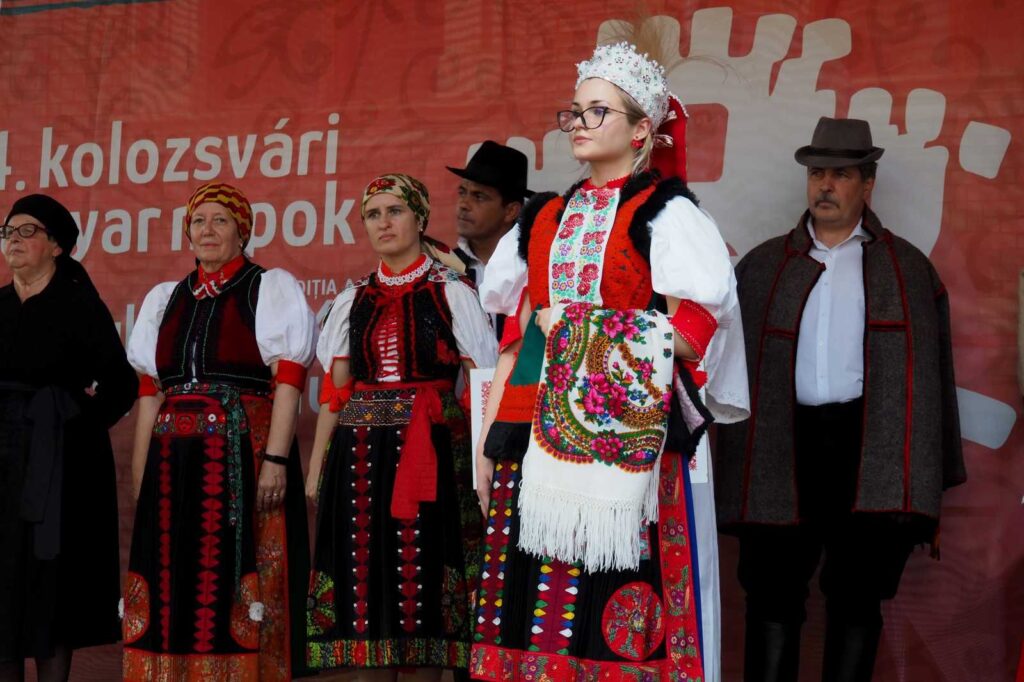
Photo: Balázs Borsi / Maszol
Kalotaszeg is famous for its tailors and costumes, which is why the people of Magyarvalkó shared some moments from the traditions of hemp processing with the audience. It turned out that the outstanding piece of Valkó clothing is the sewn waistcoat, which was sewn after writing, but some were sewn with thread, which is worn only by men from Valkó in the region. The representatives of Jákótelke, which came after them, in addition to their fancy folk costumes, also presented their village-made straw hats, which were only made in Jákótelke in the whole of Kalotaszeg after the Second World War. The straw hat was worn from spring to autumn, as well as with festive wear, by both Romanians and Hungarians.
Thursday's national costume presentation was closed by Saint Kalotaszentkirály, the delegation entertained the audience with poetry and folk dance in addition to presenting their national costumes. As it turned out, dance has a long history in the village, as the dance group was formed in 1994 by local youth at the initiative of József Kisjancsi, Ildikó Németh and Gyula Szép. Since then, they have performed at several venues, and the Cluj-Napoca audience also got a taste of the dance of different age groups.
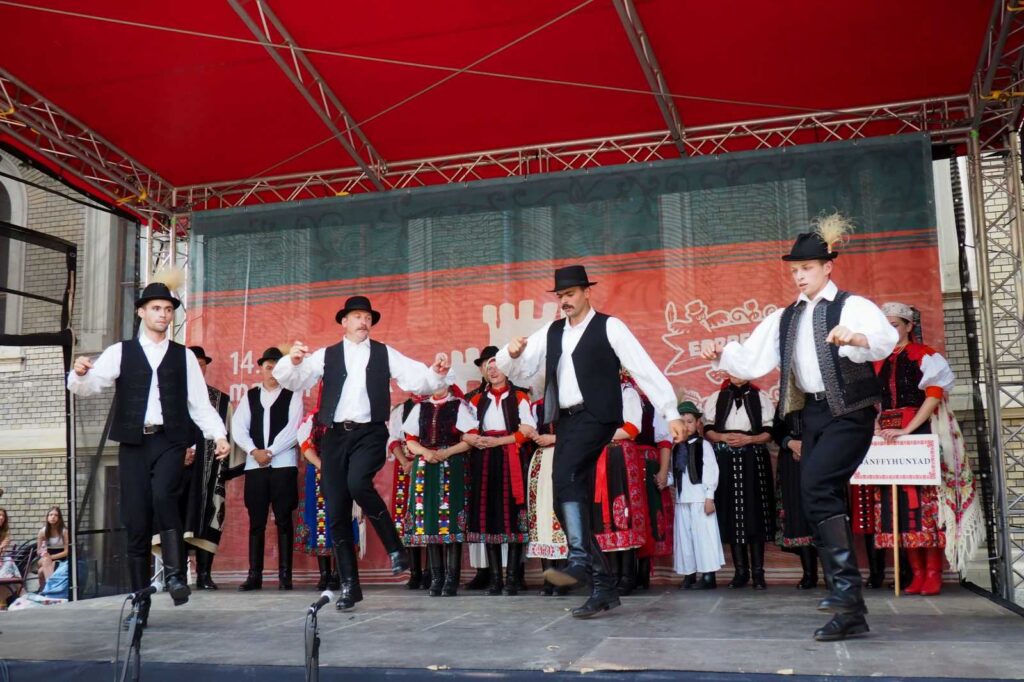
Photo: Balázs Borsi / Maszol
One of the creators of the program is Éva Kiss-Lukács from Magyarkapus, the owner of the Éva Klassizika store in Cluj, whose idea was embraced by the House of Transylvanian Traditions foundation and realized jointly with the Transylvanian Ethnographic Museum. After that, they visited communities in Kalotaszeg, asking them to show themselves and their colorful culture inherited from their predecessors in the treasured city, as they did before at the Hungarian Days in Kalotaszeg.
Those who missed Thursday's folk costume presentation will have the opportunity to admire the costumes of the regions of Kalotaszeg on Friday and Saturday. On Friday, it will be presented from the Kapus-Fenes area: Zsobok, Ketesd, Tordaszentlászló, Magyarlóna, Gyalu, Gyerővásárhely, Magyarkapus and Györgyfalva. And on Saturdays, the public can see the folk costumes of Nádasmente, the following will take the stage: Kajántó, Szucság, Mákófalva, Bogártelke, Türe and Magyarvista.





